University of Cardiff
Type of resources
Available actions
Topics
Keywords
Contact for the resource
Provided by
Years
Formats
Representation types
Update frequencies
-
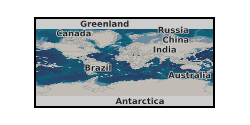
This presentation on the UKCCSRC Call 1 project, Oxyfuel and EGR Processes in GT Combustion, was presented at the GasCCS, 25.06.14. Grant number: UKCCSRC-C1-26.
-
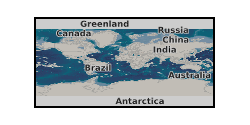
This poster on the UKCCSRC Call 1 project, Oxyfuel and EGR Processes in GT Combustion, was presented at the Sheffield Biannual, 08.04.13. Grant number: UKCCSRC-C1-26.
-
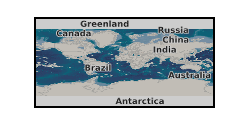
This poster on the UKCCSRC Call 1 project Oxyfuel and exhaust gas recirculation processes in gas turbine combustion for improved carbon capture performance was presented at the CSLF Call project poster reception, London, 27.06.16. Grant number: UKCCSRC-C1-26. This research is concerned with oxyfuel combustion in gas turbine applications, in particular concentrating on the use of modern swirl-stabilised burners. Oxyfuel is considered a particularly challenging idea, since the resultant burning velocity and flame temperatures will be significantly higher than what might be deemed as a practical or workable technology. For this reason it is widely accepted that EGR-derived CO2 will be used as a diluent and moderator for the reaction (in essence replacing the role of atmospheric nitrogen). The key challenges in developing oxyfuel gas turbine technology are therefore: • Flame stability at high temperatures and burning rates. • The use of CO2 as a combustion diluent. • Potential for CO emission into the capture plant. • Wide or variable operating envelopes across diluent concentrations. • Differences in the properties of N2 and CO2 giving rise to previously unmeasured flame heat release locations.
-
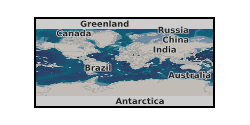
This poster on the UKCCSRC Call 1 project Oxyfuel and exhaust gas recirculation processes in gas turbine combustion for improved carbon capture performance was presented at the CSLF Call project poster reception, London, 27.06.16. Grant number: UKCCSRC-C1-26. This research is concerned with oxyfuel combustion in gas turbine applications, in particular concentrating on the use of modern swirl-stabilised burners. Oxyfuel is considered a particularly challenging idea, since the resultant burning velocity and flame temperatures will be significantly higher than what might be deemed as a practical or workable technology. For this reason it is widely accepted that EGR-derived CO2 will be used as a diluent and moderator for the reaction (in essence replacing the role of atmospheric nitrogen). The key challenges in developing oxyfuel gas turbine technology are therefore: • Flame stability at high temperatures and burning rates. • The use of CO2 as a combustion diluent. • Potential for CO emission into the capture plant. • Wide or variable operating envelopes across diluent concentrations. • Differences in the properties of N2 and CO2 giving rise to previously unmeasured flame heat release locations.
-

Sediment % coarse fraction (>63 microns), and abundance of fish teeth in coarse fraction. 2016 has been a record breaking year in terms of global temperatures. The high temperatures have resulted from a combination of elevated atmospheric pCO2 coupled with the global impacts of a strong El Nino event. There are many important components of the climate system, and the El Nino phenomenon demonstrates the importance of the low latitude Pacific Ocean. The warm pool of water in the western Pacific Ocean has not always had the same characteristics as it has today, and it has been proposed that its evolution over the past 15 million years has had a major impact on global climate. In order to understand how the warm pool might respond to future climate change, it is important to understand the drivers behind its past evolution. Did it respond simply to the changing shape of ocean basins through time? Or did it respond to other components of the climate system, such as sea level or latitudinal temperature gradients? The changes in warm pool structure may also have impacted the biological ecosystems, and hence the cycling of carbon in this region. The carbon cycle is another key component of the Earth's climate system. Understanding the causes and consequences of these long-term changes in the Pacific warm pool requires a two-pronged approach, using modelling in conjunction with proxy records for different parts of the climate system. This proposal aims to generate some key records of past high latitude temperature and ice volume that can be directly compared with changes in the warm pool through time. These records will be derived from geochemical analyses of microscopic marine fossils collected by the International Ocean Discovery Program (IODP).
-

Element maps from 5x 10 cm sections generated using the Zeiss Sigma HD Field Emission Gun Analytical SEM at Cardiff University. Maps come from sections within the early Miocene pelagic interval situated directly below the Nicobar Fan succession at IODP Site U1480 in the Eastern Equatorial Indian Ocean (for more information see published report, https://doi.org/10.1016/j.epsl.2017.07.019). These specific sections were chosen to examine the depositional environments associated with transitions from red clays to white chalk, which demonstrate distinct banding at the micro and macro scale.
-
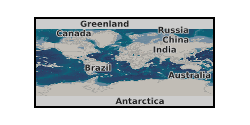
Pressurised Large Scale Generic Burner Tests With Oxygen, Air And Carbon Dioxide. Excel File. Testing Undertaken August 2014. Data Used Is Detailed In Report: Oxyfuel And Exhaust Gas Recirculation Processes In Gas Turbine Combustion For Improved Carbon Capture Performance. Final Report Including Combustion Testing Results. Grant number: UKCCSRC-C1-26.
-
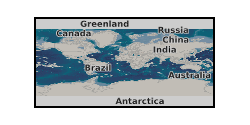
This is a blog (Update, 01.11.13) on the UKCCSRC Call 1 project, Oxyfuel and EGR Processes in GT Combustion. Grant number: UKCCSRC-C1-26.
-
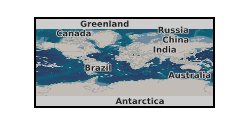
This dataset contains data from two publications investigating mackinawite FeS in an aqueous environment. The first includes the derivation and validation of the force field parameters necessary to model the system (http://link.springer.com/article/10.1007/s00214-015-1782-8). In the second publication, the force field is employed to predict the structural and dynamical properties of water at the interface with the (001) surface of mackinawite (http://scitation.aip.org/content/aip/journal/jcp/144/9/10.1063/1.4942755).
-
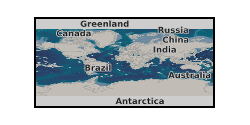
Conventional power generation in the UK faces a significant challenge in the face of decarbonising and maintaining a reliable, secure and cost effective electricity supply. The requirement for fossil-fuel based systems to integrate smoothly with CCS technologies has led to the realistic consideration of oxyfuel based generating plant for CCGT-CCS processes. For CCS to become more technically and economically feasible, it has been suggested that the CO2 scrubbing component of the CCS process will work more effectively if the CO2 concentrations in the exhaust gas were higher. Hence, enhancement of oxygen in the combustion process and the enhancement of CO2 concentration in the plant exhaust via Exhaust Gas Recycling (EGR) can dramatically increase the net efficiency of CO2 scrubbers. Whilst oxyfuel and EGR are known to be potentially very promising technologies for integration with CCGT-CCS processes, there exists a significant lack of fundamental data on the design and reliable operation of industrial burner systems with this technology. Grant number: UKCCSRC-C1-26.
 NERC Data Catalogue Service
NERC Data Catalogue Service